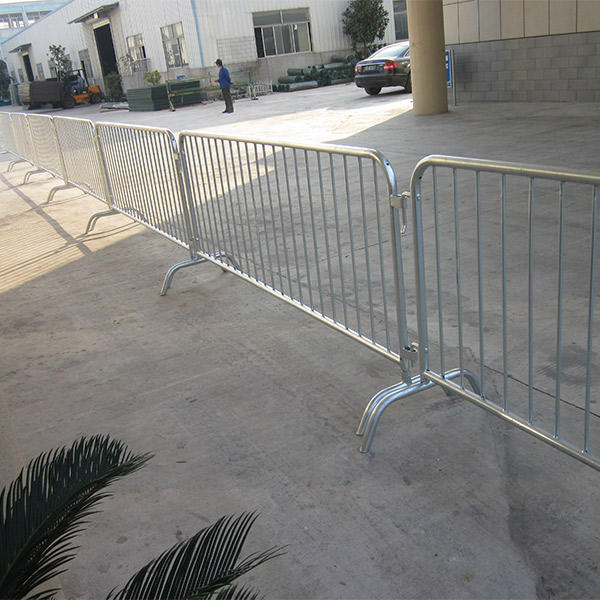Dec . 04, 2024 09:45 Back to list
concrete block mesh
Understanding Concrete Block Mesh Features, Benefits, and Applications
Concrete block mesh is a crucial element in modern construction, playing an essential role in enhancing the integrity and durability of various structures. As building materials evolve, the integration of concrete block mesh has become increasingly popular, offering both functional and aesthetic benefits. This article delves into the characteristics, advantages, and diverse applications of concrete block mesh.
What is Concrete Block Mesh?
Concrete block mesh, often referred to as concrete masonry mesh or reinforcing mesh, consists of welded wire fabric made from high-strength steel. It is specifically designed to support concrete block structures. The mesh provides reinforcement to the concrete blocks, ensuring they can withstand tensile forces, hence preventing cracking and structural failure over time. The use of a reinforcing mesh significantly enhances the load-bearing capacity of concrete blocks, making them more suitable for various architectural applications.
Features of Concrete Block Mesh
One of the primary features of concrete block mesh is its versatility. It comes in various thicknesses, wire diameters, and mesh sizes, allowing engineers and architects to select the most appropriate type for their specific project. Additionally, the mesh is corrosion-resistant, extending the lifespan of the concrete block structure, especially in environments susceptible to moisture and chemical exposure.
Another noteworthy feature is the ease of installation. Concrete block mesh can be quickly and efficiently integrated into building designs, reducing construction time and labor costs. The mesh can be cut to size and shaped to fit the specific dimensions of the project, making it adaptable for various construction requirements.
Benefits of Using Concrete Block Mesh
concrete block mesh

The inclusion of concrete block mesh offers several benefits that contribute to the overall performance of a structure. Firstly, it significantly improves the tensile strength of concrete blocks, which are naturally strong in compression but weak in tension. This reinforcement helps prevent cracks and failure, enhancing the durability of walls, foundations, and other structural elements.
Secondly, the lightweight nature of the mesh compared to traditional reinforcement methods, such as rebar, makes handling and installation easier. This lightweight characteristic also reduces the overall weight of the structure, which can be a critical factor in earthquake-prone areas.
Lastly, concrete block mesh is cost-effective. Although the initial investment is necessary, the long-term savings on repairs and maintenance expenses are substantial, not to mention the extended lifespan of the structures they support.
Applications of Concrete Block Mesh
Concrete block mesh is widely used in various applications, including residential, commercial, and industrial construction. Its versatility allows it to be employed in building walls, partitions, foundations, retaining walls, and more. In earthquake-prone regions, reinforced concrete structures with mesh provide additional stability and safety.
Moreover, the aesthetic element should not be overlooked. Concrete block mesh can be utilized in unique architectural designs where the visible reinforcement complements the overall aesthetic. This integration of style and functionality is becoming an increasingly favored choice in architectural design.
Conclusion
In conclusion, concrete block mesh serves as an invaluable component in modern construction. With its impressive features, significant benefits, and broad range of applications, it is clear why engineers and architects are turning to this product to enhance structural integrity and longevity. Investing in concrete block mesh not only ensures safer buildings but also contributes to cost-effective and aesthetically pleasing solutions in today’s construction landscape. As the demand for durable, resilient constructions continues to grow, concrete block mesh will undoubtedly play a pivotal role in shaping the future of the industry.
-
High-Quality Steel Grating Solutions for Industrial Applications | Durable, Safety, Customization
NewsJul.13,2025
-
Advanced Solutions-CompanyX|Enterprise Efficiency&Cost Reduction
NewsJul.13,2025
-
Sustainable Manufacturing-EcoTech Innovations|Waste-to-Energy System&Zero Emissions
NewsJul.13,2025
-
Welded Wire Mesh- Buildings Wiremesh Co., Ltd.|Durable Construction Material&Industrial Strength Solution
NewsJul.13,2025
-
Smart Production Solutions-Example Corp|AI Automation&IoT Monitoring
NewsJul.13,2025
-
Advanced Industrial Solutions-Advanced Industrial Solutions|Manufacturing Efficiency&Productivity
NewsJul.13,2025

